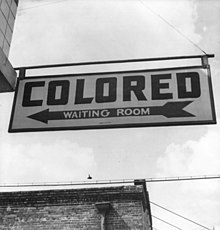This article needs additional citations for verification. (May 2019) |
Neocolonial racism is a subgroup of racism, inspired by the power dynamics left by the power and wealth disparages of a colonial landscape.
This subgroup of racism is typified by a hierarchy of classes dictated by race or ethnic group whose place in the hierarchy coincides with the level of the ethnic group during time of the foreign control; often colonial racism is seen as a power tool of elites to maintain order. Some qualities of the racism include a mainstream history that is imposed by elites, "willfully accepted false memories"[1] of popular icons who fought the racial ideas, and large disparages between the elite of colonial ruler ethnicity and the poor of the colonized ethnicity. Most often this type of racism lends to continuous and long term violence, but it can also include power dynamics continued by volunteering activities. It does not apply when Native peoples dominate the political landscape after an uprising or forced destruction of the invaders control, nor when the invasion itself was ineffective and never completed.
